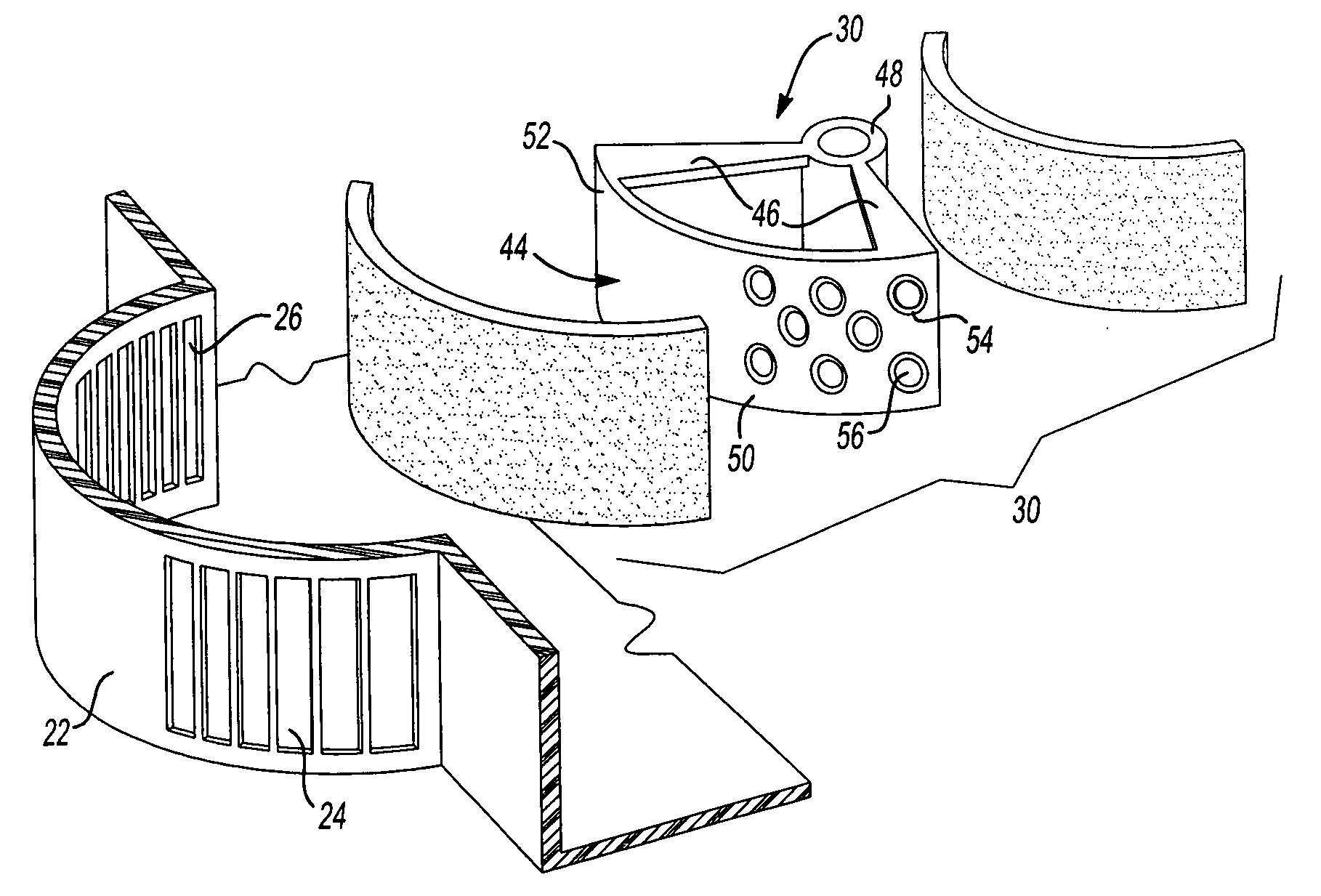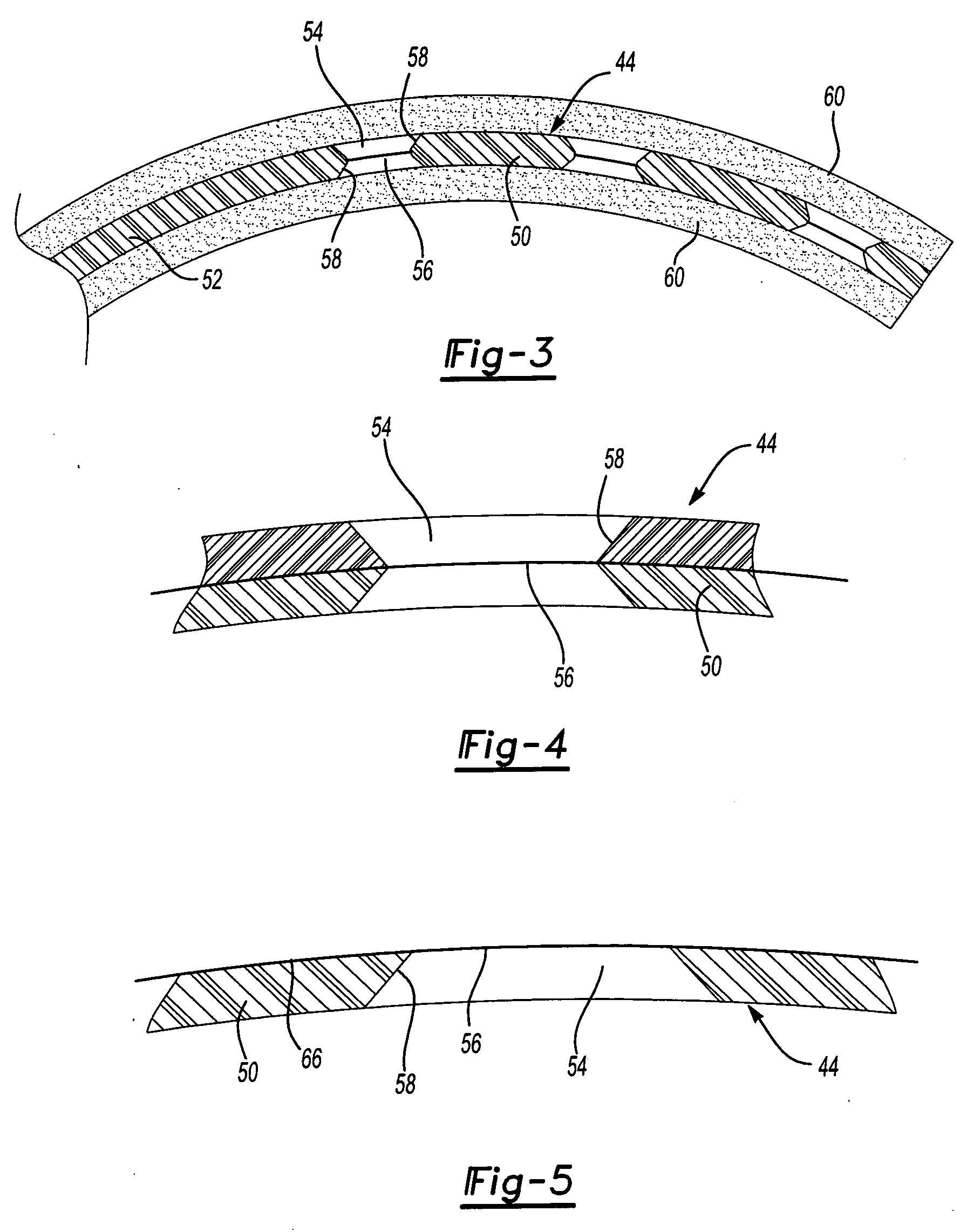Climate control system having noise reduction door
- Summary
- Abstract
- Description
- Claims
- Application Information
AI Technical Summary
Benefits of technology
Problems solved by technology
Method used
Image
Examples
Embodiment Construction
[0019] Referring now to the drawings, FIG. 1 shows a climate control assembly, seen generally at 10, of a type typically used with an automotive vehicle. The climate control assembly 10 includes a housing or case 12 including a heater core 14, an evaporator core 16 and a blower motor 18 driving a blower wheel 20. A blower inlet 22, having a fresh air inlet 24 and a recirculation air inlet 26 is located near the blower wheel 20. The fresh air inlet 24 is typically located such that when the fresh air inlet 24 is open, the climate control assembly 10 draws air from outside the vehicle passenger compartment. The recirculation air inlet 26 is located within the vehicle passenger compartment and when the recirculation air inlet 26 is open, the climate control assembly 10 draws air from inside the vehicle passenger compartment. Accordingly, air, drawn in through either the fresh air inlet 24 or the recirculation air inlet 26, flows in the direction shown by the arrow 28. The blower inlet ...
PUM
 Login to View More
Login to View More Abstract
Description
Claims
Application Information
 Login to View More
Login to View More - R&D
- Intellectual Property
- Life Sciences
- Materials
- Tech Scout
- Unparalleled Data Quality
- Higher Quality Content
- 60% Fewer Hallucinations
Browse by: Latest US Patents, China's latest patents, Technical Efficacy Thesaurus, Application Domain, Technology Topic, Popular Technical Reports.
© 2025 PatSnap. All rights reserved.Legal|Privacy policy|Modern Slavery Act Transparency Statement|Sitemap|About US| Contact US: help@patsnap.com



